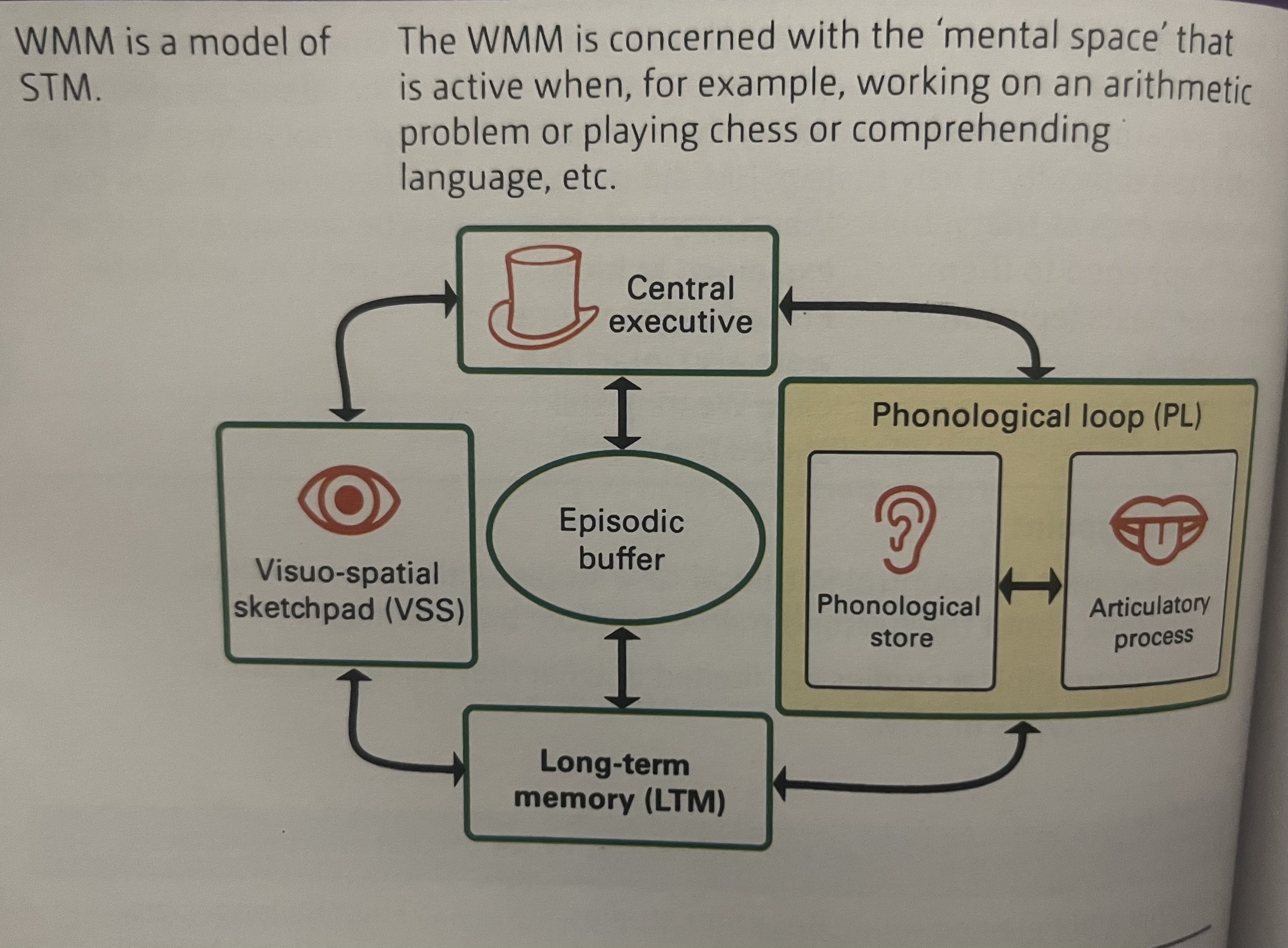Psychology: Memory - The working memory model
1/7
There's no tags or description
Looks like no tags are added yet.
Name | Mastery | Learn | Test | Matching | Spaced |
|---|
No study sessions yet.
8 Terms
Baddeley and Hitch (1974) WMM

Central executive (CE)
Has a supervisor role, it monitors incoming data and gives subsystems their tasks
Coding = flexible
Capacity = very limited
Phonological loop (PL)
Deals with sound and preserves the order in which it arrived. Subdivided into:
Phonological store: holds the words you hear
Articulatory process: repeats the words in your head to keep them in memory
Visio-spatial sketchpad (VSS)
Stores what you see and where things are
Used when picturing things in your mind e.g where you bed is in your room
Visual cache: stores images and visual info
Inner scribe: keeps track of where things are and how theyre arranged
Episodic buffer (EB)
Added in 2000
A temporary store that brings together info from other parts of memory
Combines visual, spatial and verbal info
Keeps track of order of events
Links working memory to LTM
Strength - support from clinical evidence
Shalice and Warrington (1970) patient KF brain injury
KF’s STM for auditory info was poor but could process visual info normal
Supports the WMM view of a seperate visual and acoustic memory store
However, KF may have other impairments causing poor auditory performance
Strength - dual task performance studies support the VSS
Baddeley et al. pps found it harder to carry out two visual tasks at the same time than do a verbal and visual task
Due to both visual tasks competing for the same subsystem (VSS)
Therefore there must be a separate subsystem that processes visual input and verbal processes
Limitation - lack of clarity of CE
Baddeley said CE was most important but least understood
There must be more to CE than just being ‘attention’
Therefore CE is an unsatisfactory component, this challenges the integrity of the model